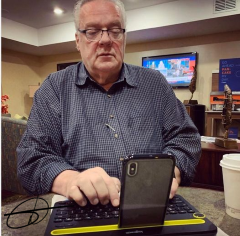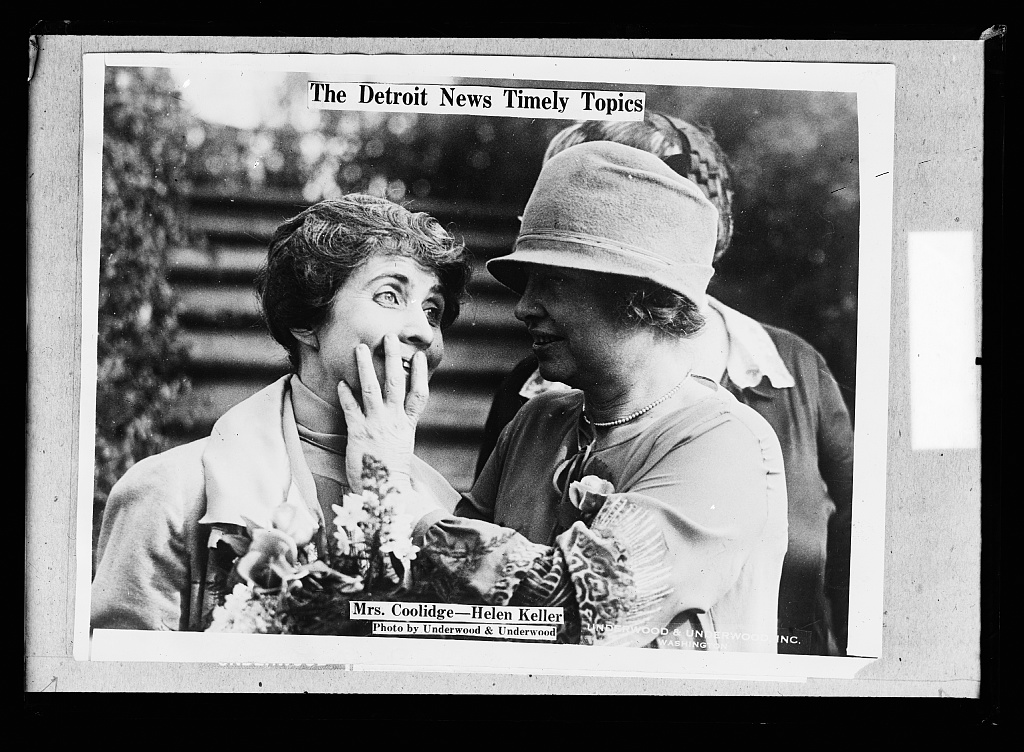Many of us have extremely demanding jobs that use mental exercises to keep all the responsibilities juggled in the air so that nothing crashes to the ground. On top of that, we feel frazzled as family demands swarm, life changes “on a dime” and it seems like we never have a moment to step back and take a break.
I worked a few months for a steel company as an inspector of manufacturing processes. It was hot in the summer, and scooting up into 30+ inch pipe to look for imperfections was not a way I wanted my life to go. But, it was a job. It put food on the table. And, I was still young enough to see the importance of choosing a career that fit who I was, and where I wanted to go. Anyway, when it came time to take a break from the work since it was noisy and we all wore hearing protection, you simply held your fists together and pretended to break something in half.
That’s how you told the other workers it was time to take a break! You mimicked something being broken! Others could read your sign and know your intentions.
I’ve used this motion ever since!
Of course, we’ve used our hand signals to communicate ever since we were young enough to know how to reach for something! Infants reach and squeeze their hands as if to grab something, thus letting you know they want something they need help with.
I’ll pat myself on the leg to let my dog know to come to me, and though it doesn’t always work, when I use words, sounds and hand signals she gets the message. It does take training to teach hand signals that mean something to me to an animal that does not comprehend.
Our communication ability is not limited to our voice but extends through our fingertips, facial expressions, and bodily motions. Everything we do and say communicates to others – but how well? Click To TweetThroughout our life, we use hand signals to communicate our intentions or even the results. Think about it. From sports to driving, to committing to something, or breaking away from someone, our hands communicate even when our words may indicate something different. When someone is scared, it’s our hands that reach out to touch and assure that everything is okay. When someone reaches out for assistance, it’s our hands that communicate our intentions of assisting or withdrawing.
When in 6th grade, and in a very poor classroom experience at a temporary school location, my good friend (David Rhames) and I learned American Sign Language to cheat on tests. Essentially, we learned to spell answers out so the other could answer questions correctly. Why? Everyone was already making straight A’s, even the kid who had failed two years running. There was no challenge! When the teacher caught and separated us, well, we learned Morse Code next so we could tap out the answers! She never caught on…
Both events required using our mind and hands to communicate, but we did not use sounds or form words. It was all done with hand signals, of a sort!
Try something today. Pretend you have laryngitis and use only hand signals to communicate. How often did you have to train the other person what your hand signals mean? How many times did they instantly comprehend? Did you get too frustrated to keep the experiment going? What were your results?
Now. Imagine talking without your hand signals. It’s a little more difficult. Why? We have related our hands to our words, and thus we create the spirit of action.
I was thinking about this earlier. When Jesus said, “Come to me, all you who labor and are heavy laden, and I will give you rest. Take my yoke upon you and learn from me, for I am gentle and lowly in heart, and you will find rest for your souls. For my yoke is easy and my burden is light.” (Matthew 11:28-30). Or, when he said, “Suffer little children and forbid them not to come unto me…” (Matthew 19:14)
If we are telling the story of the scripture, we use hand signals to motion others to come to me. Either by pretending to draw them in with a motion of encouraging them to move closer, or by simply opening your arms like you’re ready to give a great big ol’ bear hug!
Our hands signal the intention of our words and ideas. We regularly understand how to use both to communicate with others effectively. We know there are people who spoke their own tongue, but used hand signals to indicate the words they were saying, and if you could learn either the words or hand signals then you could communicate with them. Specifically, I’m thinking about our own American History with the indigenous people who were already living here as the explorers and colonizers arrived.
But imagine for a moment someone who cannot see your hand signals, nor hear your words. I’m thinking of Helen Keller. Blind. Deaf. In infancy, she lost her ability to see and hear, and thus, she would have lost her ability to speak except for miraculous training that came as a result of a father who was not willing to simply let her wilt on the vine. From institutes, doctors and even Alexander Graham Bell, she was constantly being pushed and taught how to form words she could not hear, relate them to spellings that could only be understood with her hands, and eventually, she began to speak. However, I imagine her being a strong communicator with her hands as well as her voice. [Source]
Today. I want to be a better communicator. Speaking and signaling with my entire person, I want to be the one who shares ideas and thoughts to allow others to comprehend my meaning. I want to be clear in what I say, and how I say it. Let’s practice our with our hands and our voices to communicate…and make sure what we are communicating is worthy of the hearer and watcher!

